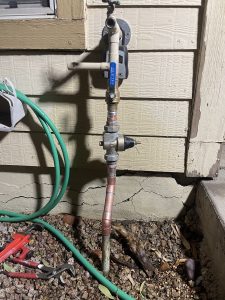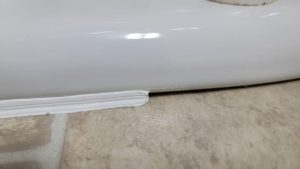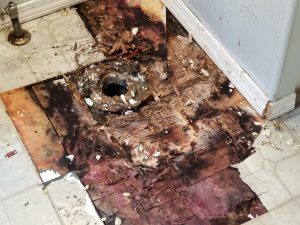Here are some of the most common plumbing issues every homeowner should know about.
Water Pressure/PRV:
A lot of people don’t realize how important it is to have proper water pressure in their home. Most home owners don’t have any kind of pressure regulator on their house. Depending on the area of your home, without one of these pressure regulators, your water pressure could be a very dangerous concern! Every home owner should have something called a PRV (pressure regulating valve) on their home, a PRV is a special valve designed to ensure the home stays at a proper, safe PSI (water pressure) level. Typically, a home should be anywhere from 60psi(low) to 80psi(high). A PRV is designed to keep your water pressure controlled between 60psi-75psi, there is a dial to adjust the water pressure. A PRV is necessary because the water pipes in your house are only capable of holding a certain pressure. Having pressure exceed the recommended amount can cause leaks, flooding homes causing lots of damage. Another important reason to have a PRV is your insurance! We’ve had clients be denied by their insurance for a water damage claims due to “negligence”. If you have high water pressure and don’t have a PRV, your insurance can use that as a reason to deny your claim. Which would cost you, out of pocket hundreds of thousands of dollars in damages.
Even if your water pressure is within proper PSI, that doesn’t mean it always is or always will be! Without a PRV, your water system is close to the same pressure that is coming in from the city. Late at night when not a lot of people are using water, pressure increases. This causes the pressure in your home to also increase, in some instances it can increase up to 20psi! Another reason your water pressure can be increased is construction. New homes being built means more city water needing to be supplied, which means an increase in pressure!
Even if you currently have a PRV, you’re still not safe! Arizona has some of the hardest water in the world, the calcium build up can seize these valves. If you have a PRV, it is important to check your water pressure at least once a year! If you check your water pressure (you can do this by attaching a water PSI gauge to your hose bib and turning the water on) and your water pressure is higher than 75psi, you know it’s time to get a new PRV!

(This is what a PRV (pressure regulating valve) looks like installed on a home, the dial on the right (or left) is what’s used to adjust the pressure.
Leaking toilet flanges:
A lot of home owners, especially in older homes, have no idea that their toilet flanges are leaking, spreading sewage contaminated fluids into walls, under tile, subfloor, etc…
A toilet flange is what is used to fixate the toilet to the floor to create a water tight seal with the inner wax ring. They constantly leak if not installed properly or if a plastic flange (the ring section) is used! One of the biggest causes to leaking/deteriorated flanges is if there is no air gap on the toilet. If you look at the back of your toilet, there should be a section on the back where it is not caulked, this is called an air gap. When toilets are installed, they should only be caulked around the sides and front. The back needs to be left open so the flange can breathe. If there is caulk going completely around the toilet, your flange is deteriorating due to condensation!

This is a toilet installed with an air gap. (Caulk only on front and sides, back is left open)
Proper flanges are supposed to be metal, metal trapped in condensation with no air to breathe will cause the metal to rust. The main concern with a leaky flange, is you wouldn’t even know about it until it gets really bad! Because it is level with the tile, this sewage water will travel under your tile, throughout the house until it makes its way up to the floor. Soaking into your drywall, baseboards, cabinets, etc… Toilets on the second floor, if your home is a two story, are even more concerning. A leaky flange will cause damage to your subfloor, slowly tearing away its structural integrity. We’ve seen some cases where the subfloor collapsed, having people fall through their ceiling. This is due to the sewage water being absorbed into the material, making it a CAT-3 contamination. A CAT-3 contamination is when the bacteria from the sewage water (any water from a drain) starts to eat away at the material, growing black mold and asbestos.
Without the proper equipment, you wont even know if the flange is leaking until it is too late. That bacteria infested water has to travel and fill most of the underside of your house before it is noticed above. This is why it is important to have these checked by a professional. Whether you have the proper air gap or not, it is still smart to get these checked by a professional (recommended every other year) to ensure your home is safe.

Hidden damage done from a CAT-3 contamination, caused by a leaky/faulty toilet flange.
Avoid these issues by getting a thorough inspection done by a professional.
